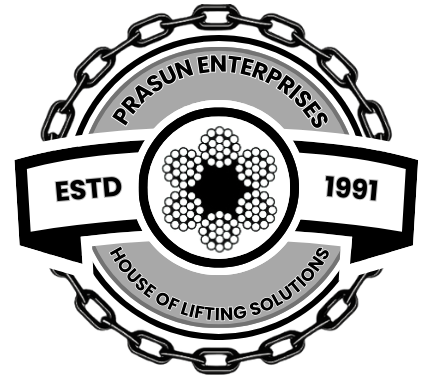
Webbing slings, also known as web slings or lifting slings, are vital instruments in different industries where lifting and securing heavy loads is a common necessity. These flexible pieces of equipment are made from strong and tough webbing material, often polyester or nylon, and are designed to supply numerous preferences in lifting and rigging operations. In this blog, we’ll explore the numerous benefits and advantages of webbing slings for your lifting needs.
Advantages of Webbing Slings
- High Quality and Durability: One of the essential advantages of webbing slings is their remarkable quality and durability. These slings are built to resist heavy loads and harsh working conditions. The webbing material, regularly made of high-quality synthetic fibers like polyester or nylon, is known for its fabulous ductile quality. It can carry significant loads without extending or breaking, guaranteeing the security of both the load and the workers involved in lifting operations.
- Lightweight and Flexible: Compared to traditional lifting chains or wire rope slings, webbing slings are significantly lighter. This makes them easier to handle and transport, decreasing the physical strain on workers. The lightweight nature of webbing slings is especially beneficial when managing larger or awkward loads because it simplifies the rigging and positioning process. In addition to being lightweight, webbing slings are also flexible. Their flexibility permits them to conform to the shape of the load, guaranteeing that the weight is equally conveyed. This is especially critical when lifting unpredictably formed or delicate things, because it helps to avoid damage to the load. Light weighted and flexibility are also important part in advantages of webbing slings.
- Reduced Risk of Damage: Webbing slings are less likely to cause damage to the load being lifted compared to other types of slings. The delicate, wide surface of the webbing helps to distribute the load equally, minimizing weight focuses that might possibly damage the load’s surface. This is often particularly vital when dealing with delicate or sensitive materials, such as glass, ceramics, or machinery with painted surfaces.
- Flexibility in Lifting Applications: Webbing slings are extremely flexible and can be utilized in a wide range of lifting and rigging applications. They are appropriate for both general-purpose lifting tasks and more specialized operations. Some common applications include:
-
- Lifting heavy machinery and hardware in industrial settings.
- Hoisting construction materials and components on work sites.
- Securing cargo during transportation and shipping.
- Handling loads in the sea and seaward industries.
- Rigging operations in excitement and stage production.
- Rescue and recovery operations in crisis situations.
-
The flexibility of webbing slings makes them an essential tool for different industries, offering solutions for numerous lifting challenges.
- Cost-Effective Solution: Webbing slings are frequently more cost-effective than other types of lifting equipment, such as chain slings or wire rope slings. Their production is less complex, and the materials are generally inexpensive. Moreover, webbing slings require minimal support, decreasing ongoing costs. This cost-effectiveness is especially engaging for businesses looking to manage their lifting and rigging costs.
- User-Friendly and Secure: Webbing slings are designed with user-friendliness in mind. They are simple to handle and require negligible preparation to utilize successfully. Workers can rapidly become capable in the proper use of webbing slings, which upgrades security on work sites. Furthermore, webbing slings come with security highlights such as color-coded names to show load capacities, guaranteeing that clients can effortlessly recognize the suitable sling for a given task. This makes a difference in preventing overloading, one of the leading causes of accidents in lifting operations.
- Resistance to Chemicals and UV Rays: Webbing slings are regularly treated to resist the damaging impacts of chemicals and ultraviolet (UV) rays. This resistance expands the life expectancy of the slings and makes them reasonable for open air and marine applications, where introduction to the elements is common.
- Wide Range of Sizes and Capacities: Webbing slings are accessible in a variety of sizes and load capacities, permitting you to select the correct sling for your particular lifting needs. Whether you’re lifting a little load in a warehouse or a massive piece of machinery on a construction site, there’s a webbing sling designed to handle the task.
- Negligible Stretch: Compared to nylon slings, webbing slings have negligible stretch. Usually profitable in circumstances where accuracy is vital, such as when positioning sensitive machinery or adjusting structural components during construction.
- Environmentally Friendly: Webbing slings are considered more ecologically friendly than other materials, such as wire rope or chain slings. They don’t require oil, reducing the risk of oil or chemical spills that can harm the environment. Moreover, the materials utilized in webbing slings are recyclable.
In Conclusion
Webbing slings offer a large number of preferences in lifting and rigging operations. Their combination of quality, solidness, flexibility, and user-friendliness makes them a perfect choice for numerous industries and applications. By choosing webbing slings, businesses can upgrade safety, decrease the chance of load damage, and improve effectiveness in their lifting tasks. Whether you are a construction professional, a manufacturing plant manager, or involved in any industry that requires heavy lifting, webbing slings are a valuable tool that can make your operations more secure and more efficient.

